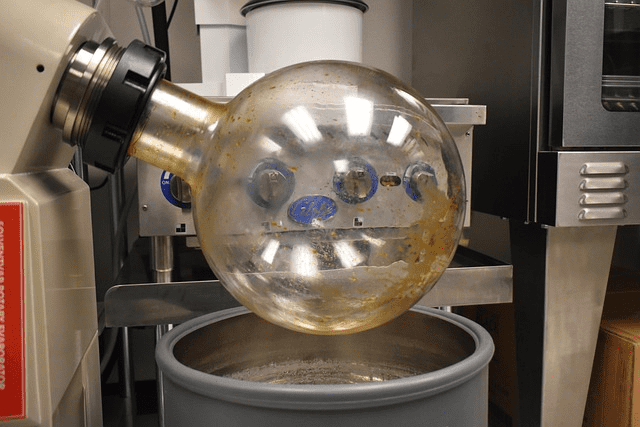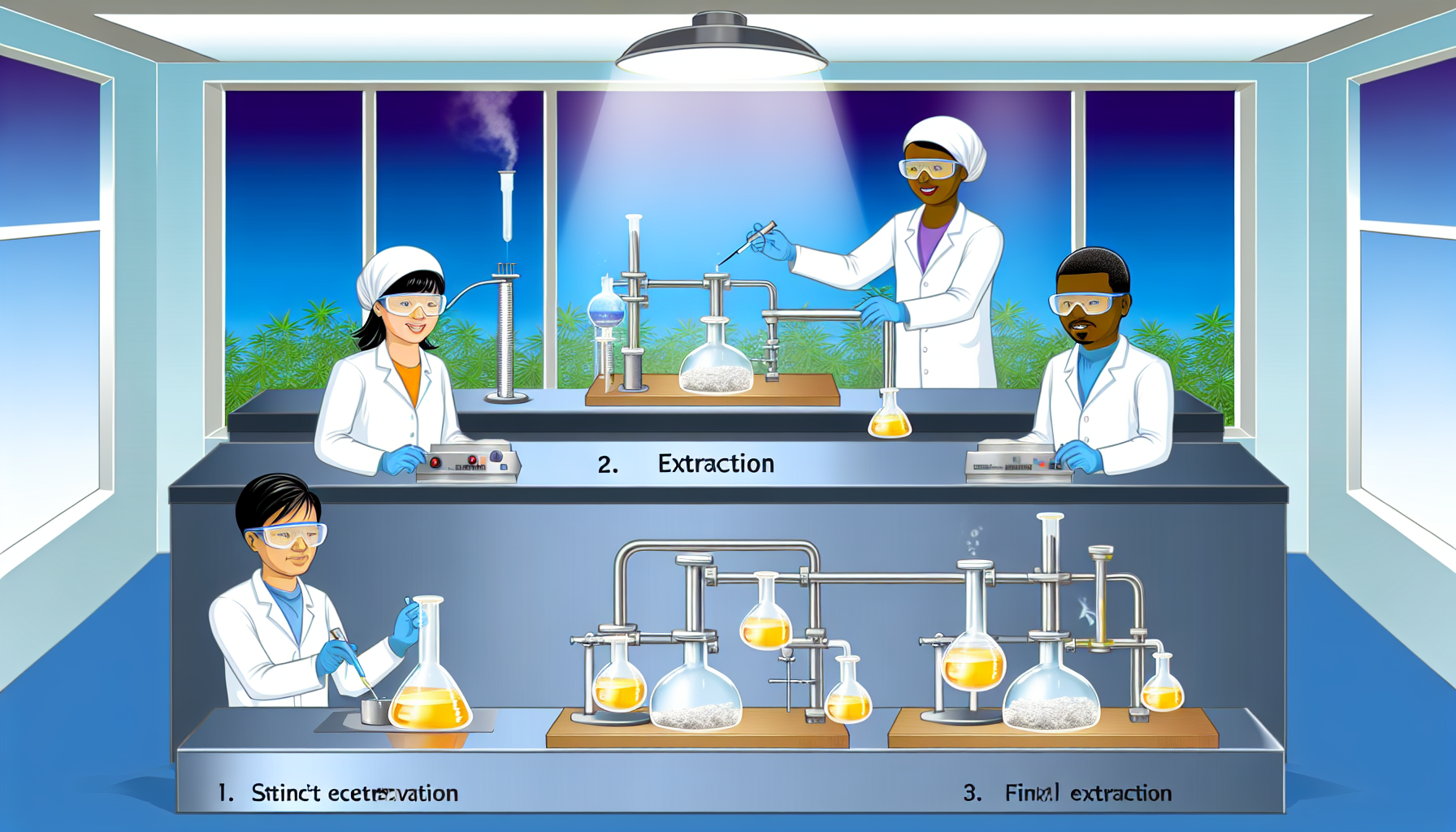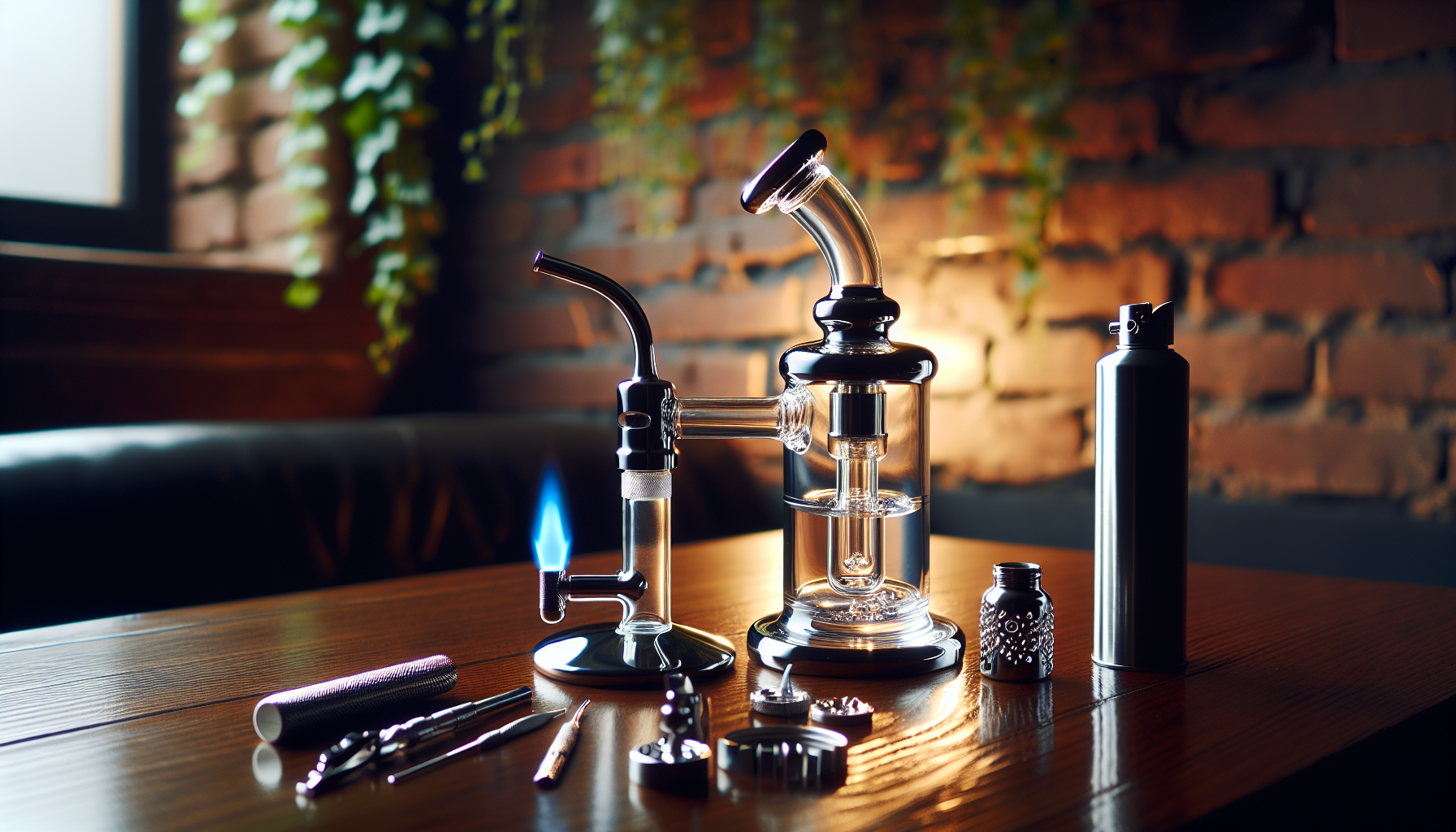Understanding Dab Wax: A Comprehensive Guide to Uses and Risks
Posted by Steve Schultheis on May 15th 2025

Discover the essence of dab wax: a cannabis extract with a powerful punch. In this article, you’ll learn about its production, use, and why its potency is a game-changer in cannabis consumption. We’ll also explore health considerations and legalities to ensure you can confidently navigate the dabbing scene.
Key Takeaways
- Dab wax is a highly potent cannabis concentrate known for its immediate and intense effects due to THC levels ranging from 60-90%, which is a much higher concentration than found in traditional cannabis flowers.
- The production of dab wax can carry significant risks due to using flammable substances like butane, posing a danger of fires and explosions, as well as health risks from residual solvents if not properly purged.
- Dabbing carries the risk of addiction and withdrawal symptoms due to its high potency. In contrast, the safety of dab products can be enhanced by purchasing lab-tested concentrates from reputable sources.
- Exploring THC-Free Dab Wax from Steve’s Goods
Exploring the World of Dab Wax
We’ll start by defining dab wax. Dab wax is:
- A concentrated cannabis product with a semi-solid, yellowish texture
- Primarily used for dabbing
- A chemically concentrated form of marijuana that provides a more refined and purer experience
- It is known for its distinctive flavor and aroma attributed to the presence of terpenes.
Creating dab wax can vary, but generally, it involves using either trim or flowers as a starting material. A potent concentrate is made through various extraction methods. The most common method for producing wax dabs is butane extraction, where butane is sprayed over the cannabis plant material to dissolve the desirable components like cannabinoids and terpenes.
Dab wax stands out from other cannabis concentrates, such as dab oil, primarily due to its texture and consistency. It offers benefits such as being more accessible to the lungs compared to smoking marijuana and providing a more potent experience. Users frequently opt for dab wax due to its purity, flavor, and intensity.
However, it’s necessary to distinguish dab wax from other forms of cannabis concentrates. Cannabis concentrates are highly potent products obtained from the cannabis plant through a process that isolates the most desirable plant compounds, such as terpenes and cannabinoids. Dab wax is just one type of cannabis concentrate, alongside shatter, budder, and live resin, each characterized by distinct textures and potencies.
Defining Dab Wax
Dab wax is composed of marijuana oils and other THC concentrates, and the production process typically includes the use of butane. These concentrated forms of cannabis offer a more potent experience for users. Dab wax is a glassy, solid concentrate with an amber or honey color. It is brittle and shatters easily.
This form of cannabis concentrate is more potent than traditional marijuana flowers, providing a more substantial effect for users. Its consistency sets it apart from other varieties.
From Plant to Concentrate

The process of making dab wax involves butane extraction. The procedure entails spraying the plants with butane and using a reactant to eliminate the butane from the resulting material. This process creates a concentrated form of cannabis, which can be consumed as wax dabs, offering a more potent experience than smoking marijuana.
A properly executed butane extraction method results in only cannabinoids and terpenes, with no residual chemicals or plant matter in the concentrate. This process can produce various marijuana concentrates, including shatter and wax.
Comparing Dab Wax to Other Concentrates
So, what makes dab wax different from other cannabis concentrates? Well, dab wax is characterized by a softer, less transparent texture and slightly lower potency with increased impurities than shatter, which typically has a clear, solid form. Other textures and potencies available among marijuana concentrates include budder wax, which has a consistency similar to cake batter, and live resin, known for its more viscous and aromatic nature.
Shatter, conversely, is characterized by its complex and brittle texture, similar to a slab of toffee, setting it apart from the softer dab wax. Crumble has a dry and loose texture that breaks apart easily. These textures not only affect handling but also influence the dabbing experience. The manufacturing process of crumble includes:
- An extended duration in the vacuum oven.
- Leading to a substantial reduction in moisture content.
- Contributing to its crumbly consistency.
The Making of Dab Wax: Extraction Techniques

Next, we’ll focus on the extraction techniques used to produce dab wax, with butane hash oil (BHO) being the most common. Butane hash oil (BHO) is a substance formed through the use of butane to extract and concentrate the potent components of the cannabis plant. The procedures involved in the BHO extraction process comprise of:
- Removing resin from marijuana bud
- Dissolving cannabis constituents into butane
- Evaporating the butane
- Purging the remaining concentrate to produce dab wax.
However, the BHO extraction method has its risks. The use of butane in extraction processes poses a significant risk due to its highly flammable nature, resulting in fires, explosions, and severe burns if proper precautions are not taken. Moreover, residual solvents in dab wax obtained through butane extraction can present considerable health hazards, particularly with prolonged exposure. It is imperative to guarantee that dab wax has undergone thorough testing and lacks residual solvents to safeguard consumer well-being.
Thankfully, there are alternatives to butane extraction. These include CO2 and ethanol extraction, which offer safer options for producing concentrates.
Butane Hash Oil (BHO) Method
The Butane Hash Oil (BHO) extraction method is commonly employed to produce dab wax. The technique involves pouring butane over the marijuana to separate cannabinoids and terpenes from the cannabis plant, followed by purging in an oven or vacuum to eliminate the butane.
It is crucial to carefully grind the cannabis, avoid overpacking, inspect for any potential leaks, and closely monitor the color of the extract when conducting butane extractions for dab wax.
Safety Concerns with Butane Extractions
Although the BHO method is favored for its high concentration yield, it carries inherent risks. The use of butane in extraction processes poses a significant risk due to its highly flammable nature. Accidents during the extraction of cannabis concentrates using butane can occur, emphasizing the critical need for careful handling throughout the process.
Moreover, inhaling residual solvents from poorly made concentrates can pose significant health risks.
Alternatives to Butane Extraction
While butane extraction is often employed for dab wax production, alternative methods are available. CO2 extraction utilizes controlled temperature and pressure to induce phase changes in CO2, allowing it to interact with the plant material in an extraction vessel and dissolve desired compounds such as terpenes and cannabinoids.
Ethanol extraction, a solvent extraction, involves immersing the plant material in ethanol to dissolve cannabinoids and terpenes, creating a cannabis extract. Both of these alternative methods offer safer options for producing cannabis concentrates and utilizing cannabis extracts.
The Anatomy of a Dab Rig

A dab rig includes components such as the dab nail, torch, and other accessories to improve the dabbing process. A dab rig is a tool specifically designed for vaporizing concentrates, consisting of the dab nail, a conical bowl for heating the concentrate, and a dabbing tool for securely loading wax or other concentrates onto the rig.
The dab nail is an essential component placed in the rig joint and heated to extremely high temperatures. Once it reaches the proper temperature, a dab can be placed on the nail, where it instantly vaporizes and can be inhaled.
A dab torch is crucial for heating the dab nail on a rig. Its high flame output is essential for adequate heating, unlike kitchen torch lighters unsuitable for dabbing. Moreover, using dab rigs poses potential safety hazards, particularly the risk of burns due to the high temperatures reached by dab nails and e-nails, reaching up to 600°F. It is crucial to exercise caution and wait for all components to cool down before handling them.
Understanding the Dab Nail
The dab nail is an essential component of the dab rig, responsible for heating the concentrate to produce vapor. Dab nails are fabricated from glass, titanium, or quartz. The optimal material for a dab nail varies based on individual preferences. However, quartz is commonly favored.
Titanium is renowned for its durability, while ceramic nails are esteemed for their heat retention and ability to offer a seamless dabbing experience.
The Role of the Torch and Heat
The torch plays a significant role in the dabbing process. Dab nails are generally heated using a blow torch, which applies direct flame to the nail, or a battery-powered heating element for a more controlled and consistent temperature.
The recommended temperature for heating a dab nail for flavor and effectiveness ranges between 350° and 400° F, though some users may prefer temperatures around 500°F for a well-rounded dab.
Enhancing the Experience with Accessories
Various accessories can enhance your dabbing experience. These include:
- Non-stick wax storage containers
- Dab mats
- Carb caps
- Dabbers
- Nails & bangers
- Torches
- Other oil accessories
Using a carb cap can elevate the dabbing experience by enabling low-temperature dabs, intensifying flavor, and optimizing the potency of the concentrate.
Dab tools play a crucial role in the handling and application of cannabis wax to a dab rig or vape device. They enhance convenience, minimize the risk of burns or injuries, and enable precise dosing during dabbing. Using a reclaim catcher when dabbing wax is beneficial because it helps save wasted wax, maintains the cleanliness of the rig for a more extended period, and enables the collection of clean reclaim for future use.

Dab wax is known for its high THC concentration and immediate, intense effects. Dab wax can contain from 60% THC up to a staggering 90%, which is significantly higher than the levels found in traditional cannabis flowers. The effects of dabbing wax are experienced almost immediately, delivering a potent and rapid experience to the user.
However, excessive use of dab wax can result in adverse physical and psychological effects such as:
- sickness
- paranoia
- mental health issues
- drug-induced psychosis
- heightened mood support
Additionally, surpassing personal THC limits can lead to overwhelmingly intense effects.
THC Concentration in Dab Wax
The concentration of THC in dab wax can range from 60-90%, which is significantly higher than in traditional hemp flower. The concentration of THC in dab wax is influenced by factors such as the method of extraction and the quality of the cannabis source material.
This can result in concentrations of up to 90 percent.
Immediate and Intense Effects
The effects of dabbing wax are felt almost instantly, providing a robust and fast-acting experience. The impact of dabbing wax is experienced rapidly, resulting in a potent and quickly-acting sensation, typically 1-2 hours.
However, the intensity of the immediate effects of dabbing wax can be impacted by several factors, such as mood support, changes in sensory perception, poor memory, paranoia, and panic attacks.
Users can regulate or modify the immediate effects of dabbing wax by adjusting the temperature applied to the concentrates.
Health Implications of Dabbing Wax

While dabbing wax can provide enjoyable effects, potential health risks shouldn’t be overlooked. Inhaling residual solvents from poorly made concentrates can pose significant health risks, mainly due to the high-temperature vaporization of terpenes, which can generate toxic byproducts that may cause:
- lung irritation
- respiratory issues
- coughing
- shortness of breath
- chest pain
It is essential to be aware of these risks and use high-quality concentrates from reputable sources to minimize potential harm.
Moreover, the long-term effects of dabbing are not fully known, with ongoing research required to understand the impacts of continual exposure to cannabinoids and residual solvents over time. Therefore, it’s crucial to utilize lab-tested products to mitigate risks.
Potential Risks of Inhaling Residual Solvents
Inhaling residual solvents from substandard concentrates can cause health issues. For instance, inhaling butane that has not been properly purged during the production of dab wax can result in potential health hazards, including:
- irregular heartbeat
- confusion
- headaches
- nausea
- muscle weakness
- abdominal pain
In addition to butane, various solvents may be employed to produce dab wax. However, the specific health risks associated with these alternative solvents have not been explicitly defined.
Long-Term Consequences
The long-term health effects of dabbing wax remain largely unknown. Prolonged use of dab wax has been linked to potential health hazards such as:
- an elevated risk of addiction
- psychosis
- neurotoxicity
- cardiotoxicity
- mood support
Furthermore, the high THC concentration may result in alterations in sensory perception and heightened mood support levels.
Moreover, exposure to residual solvents in dab wax over the long term could have profound health implications, potentially causing symptoms such as:
- mood support
- agitation
- paranoia
- psychosis
Indeed, prolonged use of dab wax can lead to respiratory problems, posing the risk of acute lung injury and lung damage.
Addiction and Withdrawal: The Darker Side of Dabbing
Dabbing carries potential risks of addiction and withdrawal. Cannabis dependence can result in addiction, and dabbing’s high potency can elevate the likelihood of developing a substance use disorder.
Recognizing Cannabis Dependence
Cannabis dependence may result in addiction, and the high potency of dabbing can escalate the risk of a substance use disorder. Indications of cannabis dependence may encompass:
- Heightened tolerance
- Withdrawal symptoms
- Unsuccessful cessation attempts
- Neglect of responsibilities
- Continued cannabis use despite adverse effects
Moreover, the consumption of highly potent forms of marijuana can lead to an increased tolerance, requiring users to smoke marijuana in more significant amounts to achieve the same effects, potentially leading to dependence or addiction.
Managing Withdrawal Symptoms
Professional support and treatment may be required to manage withdrawal symptoms for those coping with addiction to dabbing. Typical withdrawal symptoms from dab wax encompass:
- headaches
- dizziness
- mood support
- various other physical and psychological manifestations.
Professionals can offer support, guidance, and treatment options to manage withdrawal symptoms from dab wax effectively. This may involve providing counseling and therapy to address the physical and psychological aspects of withdrawal, ensuring a safe and comprehensive process.
Legal Considerations and Market Availability
Legal considerations and market availability influence the accessibility and safety of dab wax. Dab wax is considered legal for production, purchase, and usage in the following locations:
- Canada
- Georgia
- Luxembourg
- Malta
- Mexico
- South Africa
- Thailand
- Uruguay
- 24 states of the United States
Understanding Cannabis Legality
It’s necessary to comprehend cannabis legality, as laws vary by location and may impact the availability of dab wax. The recreational use of cannabis has been legalized in 24 states, three U.S. territories, and D.C. Another seven states have decriminalized its use. However, the specific laws and limits vary by state.
Purchasing Dab Wax Safely
To purchase dab wax safely, one should:
- Source products from reliable, lab-tested providers to guarantee quality and reduce health risks
- Buy from a reputable and licensed dispensary or delivery service
- Buy from authentic sources and compare prices to ensure high-quality and authentic resin
- Purchase from licensed vendors and trusted brands
When purchasing dab wax online, it is crucial to:
- Select a reputable online dispensary
- Verify the legality and compliance of the product
- Ensure product quality and testing
- Carefully review customer feedback
Introducing Wax dabs from Steve’s Goods
We understand the importance of providing a safe way for individuals to enjoy high-potency wax dabs. That’s why we are committed to using only the purest THC-free distillate in our CBD dabs, ensuring the best possible experience.
Visit our concentrate shop to explore our wide range of wax dabs. Discover various distinct options, from bold and pungent to delightfully sweet. There’s something here to suit every taste.
You can learn more about dabbing from Steve of Steve’s Goods himself on his Steve’s Goods YouTube Channel. See you there!
Summary
In conclusion, dab wax is a potent cannabis concentrate that offers a unique experience. It’s created using various extraction techniques, most commonly butane extraction. The dabbing process involves a dab rig with a dab nail, torch, and various accessories. Dab wax is known for its high THC concentration and immediate, intense effects. However, it’s essential to be aware of the potential health implications, the potential for addiction, and the legal considerations. Always ensure that dab wax is purchased from reputable, lab-tested sources to ensure quality and safety.









